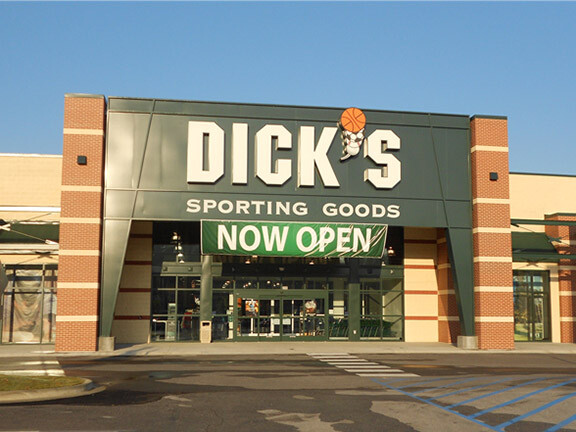![]() A lot of small businesses have been driven out of business by big box stores over the years. If you’re running a retail chain like Walmart you can spend a half a billion dollars a year flooding the airwaves with advertising in order to sway public opinion and build credibility for your brand.
A lot of small businesses have been driven out of business by big box stores over the years. If you’re running a retail chain like Walmart you can spend a half a billion dollars a year flooding the airwaves with advertising in order to sway public opinion and build credibility for your brand.
Small companies don’t have that luxury.
You have to build credibility some other way… by delivering a great product, by providing exceptional service, by exceeding all expectations and by telling better stories than the big guys.
So brand credibility is not just a marketing issue, it’s also an operational issue.
You can’t just say the right thing, you also have to do the right thing. If you want to build credibility, your marketing message have to be aligned with a well-tuned operation.
Here’s an example from one of our golf industry clients: His little shop is not like the big box store right up the road. But like all retailers, he always wanted to advertise low prices. Sales get people in the door, he says.

“You can’t compete on price,” I said. “It’s just not a credible message.”
“Yes we can… They’re not really cheaper, not in this business,” he said.
“Doesn’t matter,” I replied. “Everyone believes they’re cheaper because the big box stores can buy in bulk. They have special deals with manufacturers.”
“No they don’t,” he said. “No different than what we get.”
“That may be true, but it doesn’t matter. The public believes that the big box store will be cheaper. And you can’t fight that perception. It’s like City Hall.”
“Even if we advertised lower prices week-in and week-out for years, consumers won’t believe that you can match the big chains on price. The guys who are price sensitive will always go to the big box store to compare. If you want a credible brand, you have to hang your hat on something else.”
In that case, it was personalized service that became the centerpiece of their advertising. That’s not just a good story, it’s a credible brand message.

The little guys can always compete on service, because the public perception is that big chains suck at it.
But it’s not enough to just start running digital ads or TV spots that say you have great service. First you have to prove it, demonstrate it, and actually deliver it every day. That way, all the reviews and stuff that show up on social media will substantiate the claim.
It’s not just about good story telling. It’s also story proving. That’s how you build brand credibility.
Here’s the challenge: Consumers begin every brand relationship in a state of total DISbelief. They don’t have enough information about your business to like or dislike it, but they are not neutral about it, due to their inherent skepticism.

It’s the built-in BS meter they all have. They don’t believe anything you say.
So if they have no experience with your brand, and no point of reference, you have to do little things that will allow prospects to suspend their DISbelief.
It’s a far cry from getting them to believe your pitch or trust your brand, but it’s a start. You have to build brand credibility, step by step.
The best story tellers — novelists, screenwriters, movie makers, comedians, preachers — know how to get audiences to suspend disbelief and go along with plots that are a bit far-fetched.

By using vivid, believable details and dialog they draw us into their stories and “sell” us on characters that are bigger than life and settings that are out of this world. Think The Matrix, Star Wars and The Lord of the Rings.
J.R.R. Tolkien commented on the suspension of disbelief in an essay, “On Fairy Stories.” Tolkien says that, “in order for the narrative to work, the reader must believe that what he reads is true within the secondary reality of the fictional world.”
In marketing, there’s a secondary reality in every market segment.
If you want people to suspend their disbelief long enough to “hear” your business pitch, you need to tell stories and use details that fit the context of that secondary reality.
Like the retail reality that says little guys can’t compete with the big box stores on price. You have to work within that secondary reality, not against it. That’s the importance of context.
In novels, vivid, realistic details that fit within that secondary reality (context) make the story more believable. More engaging.
The same holds true for marketing communications of all sorts. Dramatic details and believable situations help you sell your story and sway skeptics. Not dry, hard-selling facts, but character details that reveal the personality of your brand and demonstrate your understanding of the consumer and his or her problem.
Instead of shoving your product features down their throats, try for a more novel approach.
Start by listening. Suspend your own disbelief and really listen to what customer, prospects, and non-customers have to say about your brand and your business category. Every little nugget of insight can be turned into a new detail that will help you build brand credibility, if you use them right.
Here’s one simple way to build brand credibility: Choose the right photos for your website.
Every image should help tell the story and support the secondary reality you’re working within. If you load up lousy stock images that look fake, no one’s going to believe the story that goes with the photos. Your brand cred will be shot.

That retail client of ours needed images that would support his story of superior customer service. So we didn’t use stock photos of smiling, happy customers. We created a whole new guarantee program that the big box store could never duplicate. Then we branded that idea with attention-getting graphics for the website, the ads, and the store. Good service wasn’t just talk. It was guaranteed.
Headlines are equally important.
You should keep your headlines consistent with the images and with the secondary reality of your target audience. (You can’t show one thing, and say something else.)
If you keep all those little executional details in sync with your operation, and maintain good practices over time, disbelief will turn to reluctant acceptance, acceptance to approval and approval to purchase. For a few lucky brands, it’ll even progress to a lifelong love.
As movie goers, game players and book readers, humans love to suspend disbelief. It’s an easy, welcome reprieve from the reality of everyday life. We jump on every opportunity we get… that’s why great commercials become part of the pop culture.

The Mayhem guy for AllState or the Old Spice campaign requires a bit of a leap. But we’re happy to do it, and go along with that reality, 30-seconds at a time.
We don’t want to be sold, we want to be entertained. If you do things right we’re willing to suspend our disbelief long enough for you to establish a dialog with us. And then a relationship. And that’s what brand credibility is all about.
So when you’re working on content for your website, or a story for your latest PR effort, make sure that it rings true with your operation.
For help with your own brand message, call me at BNBranding.
Read more on building an authentic brand

